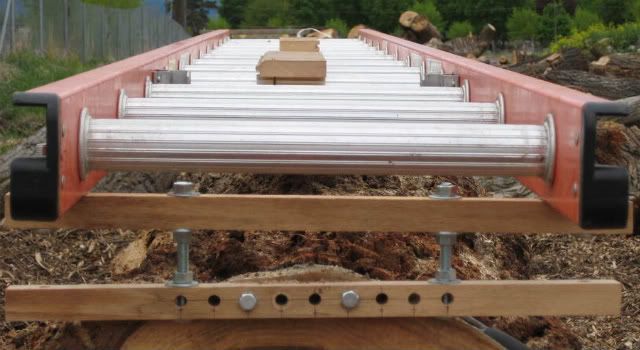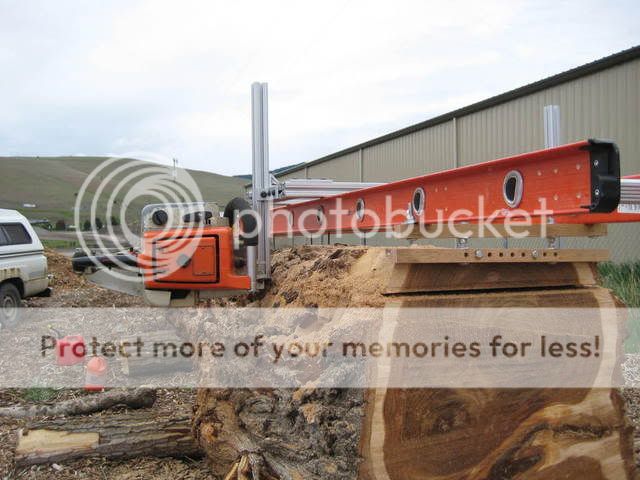All of the milling rails I've used, including ladders, have always been susceptible to some twist especially when they were used at over the 16ft mark. The way I have been checking for twist has been to use a crossed string stretched between the diagonals of the rails, or a spirit level and comparing the angle across each end of the rails. The spirit level method worked OK provided the log is reasonably level to start with while the crossed string method was ok for shorter logs
Yesterday I realized that my digital angle finder would probably also do the trick and make it easier comparing the angle between the two ends of the rails.
Here's what I mean by twist. I have exaggerated it by placing a piece of wood under one rail so you can see it easily.

I made myself a large try square using some 1/4" Ally strap.
I place the square against the rails and zero the scale.

I included this picture so you can see the try square.

And here is the other end with the angle correcting adjustment made ( a thin piece of wood jammed under the rail).

I must make myself a moveable steel tab that attaches to the rail, that includes a threaded hole through which a bolt can be screwed to make contact with the log to make the angle adjustment.
Yesterday I realized that my digital angle finder would probably also do the trick and make it easier comparing the angle between the two ends of the rails.
Here's what I mean by twist. I have exaggerated it by placing a piece of wood under one rail so you can see it easily.
I made myself a large try square using some 1/4" Ally strap.
I place the square against the rails and zero the scale.
I included this picture so you can see the try square.
And here is the other end with the angle correcting adjustment made ( a thin piece of wood jammed under the rail).
I must make myself a moveable steel tab that attaches to the rail, that includes a threaded hole through which a bolt can be screwed to make contact with the log to make the angle adjustment.








